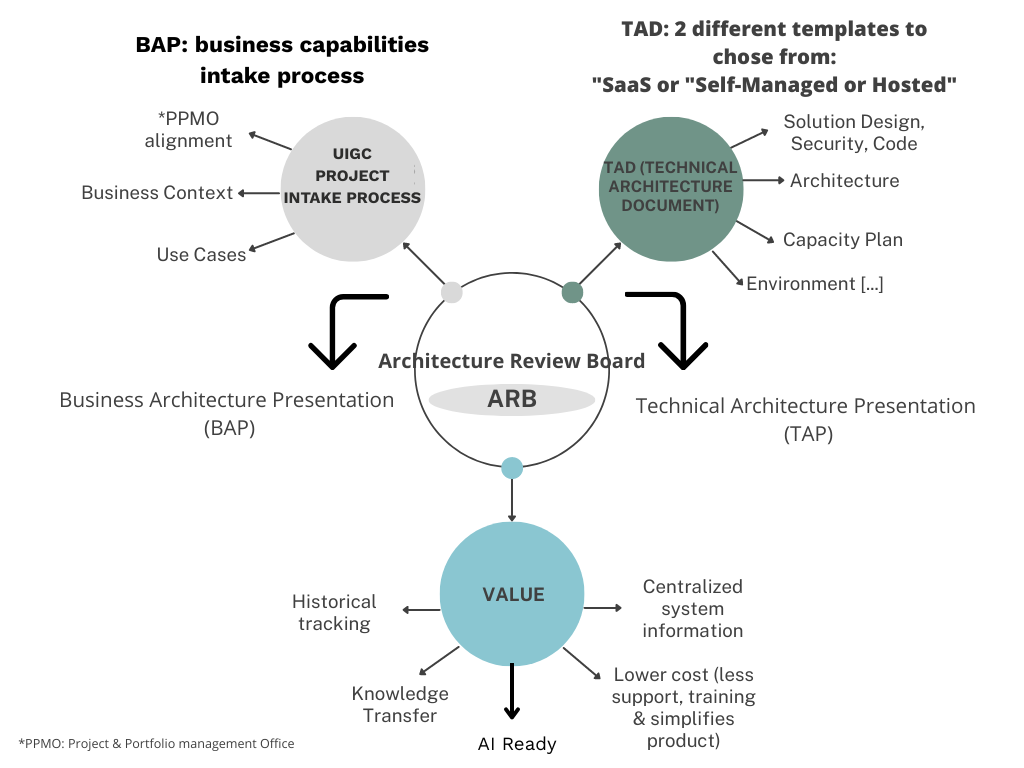Business Architecture Presentation/Technical Architecture Document
The Business Architecture Presentation (BAP) and the Technical Architecture Document (TAD) enable knowledge transfer, make IT operations consistent and coherent, time efficient, and provides a clear picture of overall systems.
The value for uOttawa
What is the purpose?
The Business Architecture Presentation (BAP) aims at providing a high-level description of the product from a business perspective. It may include a description of how the document relates to organizational goals and/or objectives.
The Technical Architecture Document (TAD) addresses architectural aspects like: solution design, infrastructure components, integration requirements, capacity, and security. It includes how the product will meet those goals and objectives.
Why is this important?
- Keeps track of all aspects of an application (or other IT products);
- Plays the role of development, maintenance and knowledge transfer to developers;
- Make information easily accessible and provide a limited number of user entry points;
- Helps users learn quickly, simplify the product and help support costs.
The success of those documents depends on one important element:
Reliable and up-to-date data.
To enable this, the Product Manager must ensure the documents reflect current situation, however the collaboration of every member of the IT team is a must.
If any changes occurs with regards to the product, the BAPs and the TADs must be updated.


What is the BAP/TAD scope ?
It should describe the major components that will make up the solution, the dependencies between them, and how they will work together.
These documents should:
· Capture all design considerations
· Capture architecture level technical design decisions.
· Convey the technical architecture to the University’s Architecture Group for review and approval.
· Support the on-boarding of new developers into the project more efficiently and effectively.
· Enable a smoother transition into operations (DevOps).
The templates are also "living documents"
The EA team engaged in several discussions to gather feedback about the BAP/TAD. The aim of the discussions was to reflect on past work and identify opportunities for improvement of the documents. If you have any suggestions, please contact the team, as we wish to improve continuously.
Suggestions
